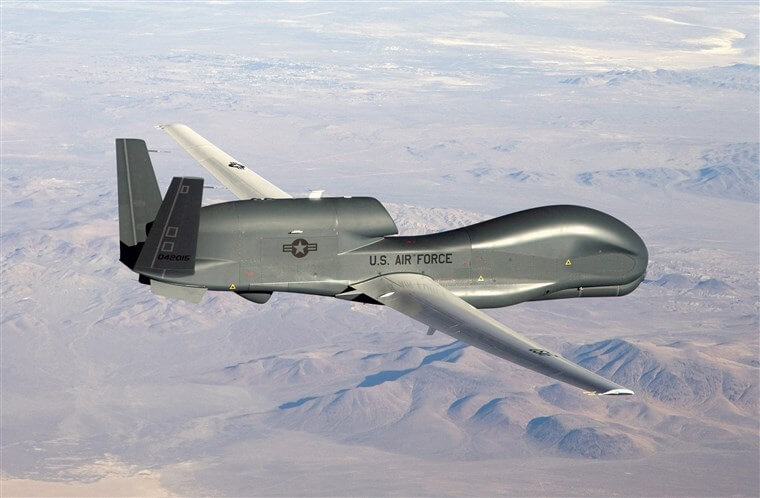
The U.S. may be readying drone strikes in Kenya
The request is reportedly a response to a January al-Shabab attack on a U.S. military base located in the Kenyan coastal county of Lamu that killed one American soldier and two U.S. defense contractors. Approval of the authorization request would give the U.S. military the ability to conduct drone strikes in Lamu and Garissa, two-Muslim majority Kenyan counties that border Somalia.
Considering the history of security agencies’ human rights violations, drones usage risk further deepening historical grievances in the region. It also comes at a crucial moment for neighboring Somalia, which is gearing up for elections as well as the drawdown of an African Union peacebuilding mission in the country.
The expansion of drone strikes into a new country would be a turning point in U.S. military action in the East and Horn of Africa region. To some analysts this moves U.S. engagement closer to the “forever wars” that have characterized post-9/11 military action in other parts of the world.
These counties are the focus of counterterrorism operations
The regions at issue are at the center of Kenya’s counterterrorism efforts. Since commencing a military invasion of Somalia in 2011 to curb the threat of al-Shabab, Kenya has conducted significant domestic counterterrorism operations in both Garissa and Lamu counties.
Human rights groups accuse the Kenyan Anti-Terror Police Unit of committing extrajudicial executions, enforced disappearances and torture. Al-Shabab then used Kenya’s government security practices as recruitment propaganda.
In April 2015, one of the deadliest al-Shabab attacks in Kenya left 148 people, mostly students, dead at Garissa University College. In 2014, the group killed at least 48 people in Mpeketoni, a town in Lamu county. However, counterterrorism efforts have thus far failed to address historical grievances and marginalization in northern and coastal Kenya.
This dates to fierce debate in 1963, on the eve of Kenya’s independence
Northeastern Kenya, including Garissa county, has a predominantly ethnically Somali population. A British-created commission, created before independence to assess northeasterners’ views, found most of the population significantly preferred unity with Somalia, instead of being part of Kenya. Kenya’s independence leaders strongly rejected any proposals to split this area from Kenya, which led to an insurgency.
Kenyan Somalis fought to secede from Kenya, with the Somalia government’s help. The new Kenyan government reacted by declaring a State of Emergency in late December 1963, just two weeks after independence. Insurgency and counterinsurgency in Kenya’s Shifta War lasted from 1963-1967.
A Truth, Justice, and Reconciliation Commission set up in Kenya found government security forces committed “widespread and systematic” human rights violations and between 2,000 to 7,000 people were killed in the fighting. Since then, the region has been marred by cyclical violence and significant militarization — and allegations of abuses by Kenyan security forces. For example, in 1984, security agents reportedly killed an estimated 5,000 people in the Wagalla region.
Kenya’s coastal area, which includes a sizable Swahili population, has historically also faced discrimination. In the late 1960s, the government confiscated large areas of land to give to poor ethnic Kikuyus under resettlement programs, altering the ethnic compositions of Lamu county and fueling interethnic tension. Government suspicion of local Swahili populations as being “foreign” further perpetuated discrimination.
Studies analyzing Kenya’s counterterrorism efforts in Lamu, which have included roundups of Muslim leaders and alleged extrajudicial executions, have found these programs have fueled a sense of further injustice among the population, and they have thus far failed to curb extremism.
The U.S. military footprint is growing in this part of Africa
Kenya is a crucial partner in the U.S. global “war on terror” — and this has meant sustained financial and technical assistance from the United States. In the past decade, the Defense Department has provided Kenya roughly $400 million in counterterrorism “train and equip” support.
The request to expand the use of drones to Kenya comes as the United States increases its regional military involvement. The U.S. has focused its East Africa counterterrorism efforts on Somalia, and carried out its first drone strike there in 2007. Under the Trump administration, the U.S. military significantly increased the frequency of drone attacks and loosened the oversight required to approve strike targets in Somalia. In March 2017, the Trump administration reportedly secretly designated parts of Somalia “areas of active hostilities.” This meant the high-level, interagency vetting of proposed strikes and a need to demonstrate with near certainty that civilians will not be injured or killed no longer applied.
Last year, the U.S. military acknowledged conducting 63 airstrikes in the country and, as of late August, Africom revealed the U.S. military had carried out 46 strikes in 2020.
Gen. Thomas Waldhauser, the Africom commander at the time, testified in a Senate hearing in February 2019 that strikes “are not going to defeat Al Shabaab,” saying their purpose is “to provide the opportunity for the Federal Government and the Somali national army to grow and assume the security of that country.”
However, Somalia’s political and security conditions remain fragile. Somalia’s parliamentary and presidential elections, initially scheduled for November, were postponed because of “significant technical and security challenges.” Somalia’s government struggles to control significant portions of the country with the African Union Peacekeeping Mission in Somalia (AMISOM) scheduled to exit Somalia in December 2021.
More than a decade after the first U.S. drone strikes in Somalia, the security situation continues to be precarious, both in Somalia and in neighboring Lamu and Garissa counties in Kenya. There remains a significant trust deficit between communities and national security forces in northern and coastal Kenya. Conducting drone strikes in these areas would probably add another complex layer to an already fragile region.
Abdullahi Halakhe (@qulstm) is a Horn of Africa analyst.
Anjli Parrin (@AnjliParrin) is the associate director of the Project on War Crimes and Mass Graves at the Columbia Law School Human Rights Institute.

